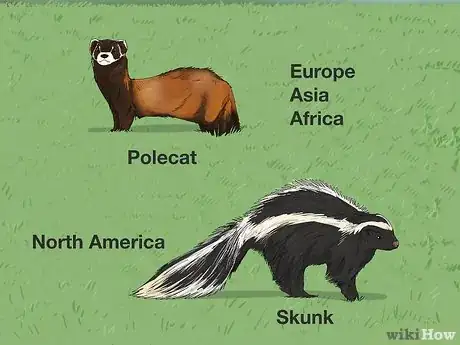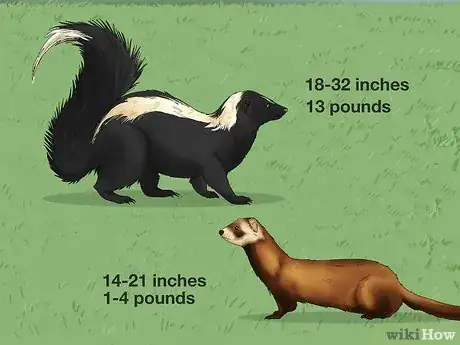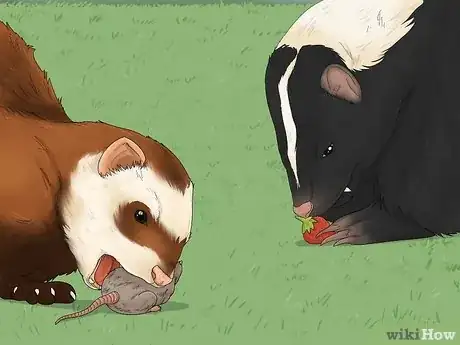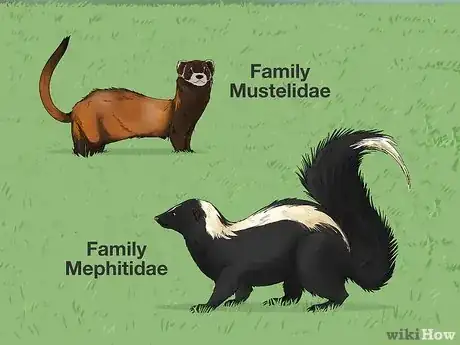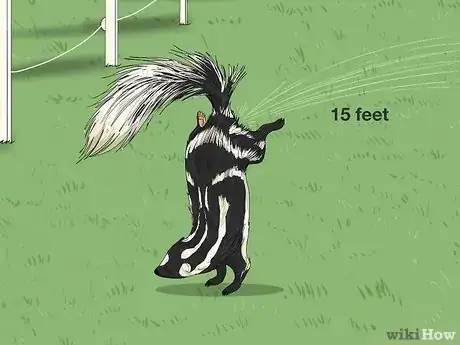This article was co-authored by wikiHow staff writer, Devin McSween. Devin McSween is a wikiHow Staff Writer. With a background in psychology, she has presented her research in social psychology at a variety of conferences and has contributed to several manuscripts for publication. At wikiHow, Devin combines her love of writing and research with the goal of bringing accessible information to wikiHow readers that will help them learn and grow. She earned her BS in Psychology from the College of Charleston.
There are 12 references cited in this article, which can be found at the bottom of the page.
This article has been viewed 1,726 times.
Learn more...
Growing up, you might have heard a neighbor call a skunk a polecat as they shooed one out of their lawn. So, you might be surprised to learn that a polecat is not another term for a skunk; it’s actually a completely different animal! Whether you’re just now learning about polecats or are simply curious about these 2 stinky, but cute, animals, we’ll tell you how to tell them apart. Read on to learn more!
Things You Should Know
- Skunks live in North America while polecats are found in Europe, Asia, and Africa.
- Polecats are typically dark brown with white face markings, while skunks are usually black with distinctive white stripes.
- Skunks have large, bushy tails unlike polecats’ long, sleek tails.
- Polecats live in pastures, marshes, and meadows, while skunks prefer forest edges.
Steps
References
- ↑ https://www.britannica.com/animal/polecat
- ↑ https://www.ncwildlife.org/Learning/Species/Mammals/Spotted-skunk
- ↑ https://www.tn.gov/twra/wildlife/mammals/medium/striped-skunk.html
- ↑ https://www.discoverwildlife.com/animal-facts/mammals/facts-about-polecats/
- ↑ https://factanimal.com/striped-polecat/
- ↑ https://onekindplanet.org/animal/polecat-european/
- ↑ https://www.tn.gov/twra/wildlife/mammals/medium/striped-skunk.html
- ↑ https://www.britannica.com/animal/skunk
- ↑ https://www.britannica.com/animal/polecat
- ↑ https://www.discoverwildlife.com/animal-facts/mammals/facts-about-polecats/
- ↑ https://citizensforconservation.org/wp-content/uploads/2014/08/Skunk.pdf
- ↑ https://citizensforconservation.org/wp-content/uploads/2014/08/Skunk.pdf
- ↑ https://www.wildlifetrusts.org/wildlife-explorer/mammals/polecat
- ↑ https://onekindplanet.org/animal/polecat-european/
- ↑ https://www.britannica.com/animal/skunk
- ↑ https://myfwc.com/wildlifehabitats/profiles/mammals/land/skunks/
- ↑ https://www.discoverwildlife.com/animal-facts/mammals/facts-about-polecats/
- ↑ https://www.britannica.com/animal/skunk
- ↑ https://www.krugerpark.co.za/africa_striped_polecat.html
- ↑ https://www.tn.gov/twra/wildlife/mammals/medium/striped-skunk.html
